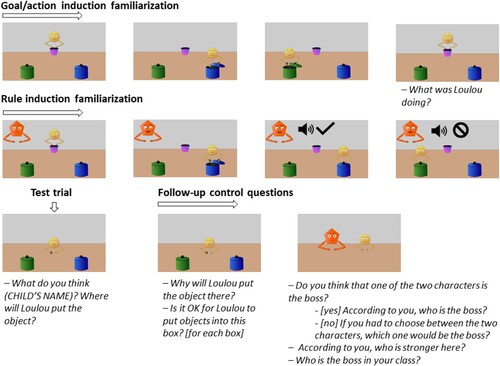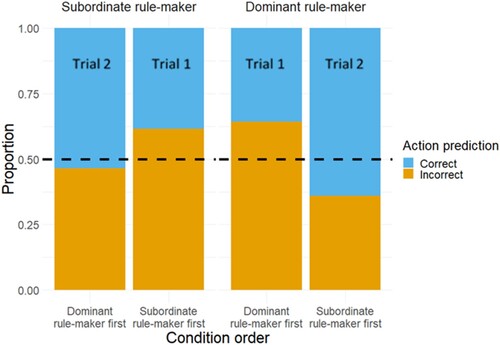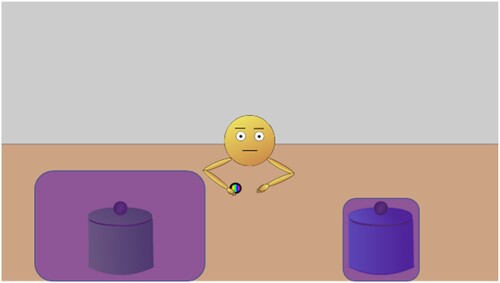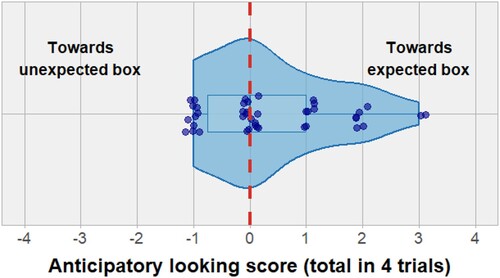Figures & data
Figure 1. The flow of trails and questions, with the still-images from animations in Experiment 1. The sound icon represents the scenes in which the dominant agent vocalised an approved or unapproved voice, and the tick and stop icons represent the approving or disapproving nature of the vocalisation, respectively.

Figure 2. The proportion of correct (selecting approved box) and incorrect (selecting unapproved box) responses is based on condition and condition order.

Figure 3. Small and larger AOIs. Two AOIs defined for each box. An example of small AOI (right) and large AOI (left) is represented by semi-transparent purple shapes on the boxes.

Figure 4. Boxplot and the violin-plot of the Anticipatory Looking Scores (ALS). Blue dots represent the sum of ALS over 4 trials for each toddler. The dotted red line represents the hypothetical chance level. For each trial, toddlers got a score of 1, –1, or 0, if they made an anticipatory look towards the expected box, unexpected box, or no anticipatory looks at either box, respectively.

Supplementary Material 3.docx
Download MS Word (16.2 KB)Movie3_Condition1_Test_For_preschoolers.wmv
Download (1.5 MB)Movie10_Condition2_Incoherent_test.wmv
Download (7.1 MB)Movie7_Condition_2_Familiarization2_Rule_Induction.wmv
Download (12.9 MB)Supplementary Material 4.docx
Download MS Word (22 KB)Movie9_Condition2_Coherent_test.wmv
Download (6.9 MB)Movie2_Condition1_Familiarization2_Rule_Induction.wmv
Download (12.6 MB)Movie6_Condition2_Familiarization1_Goal_Induction.wmv
Download (23.4 MB)Movie8_Condition_2_Test_for_preschoolers.wmv
Download (1.6 MB)Movie4_Condition1_Coherent_test.wmv
Download (6.2 MB)Supplementary_Material_1.docx
Download MS Word (303.5 KB)Movie1_Condition1_Familiarization1_Goal_Induction.wmv
Download (20.9 MB)Supplementary Material 2.docx
Download MS Word (25.6 KB)Movie5_Condition1_Incoherent_test.wmv
Download (6.1 MB)Data availability statement
The data, sampling strategy and sample size calculations, R files for the analysis syntax, example video stimuli, and other related files can be found in the following link: https://doi.org/10.17605/OSF.IO/MZFPU
.